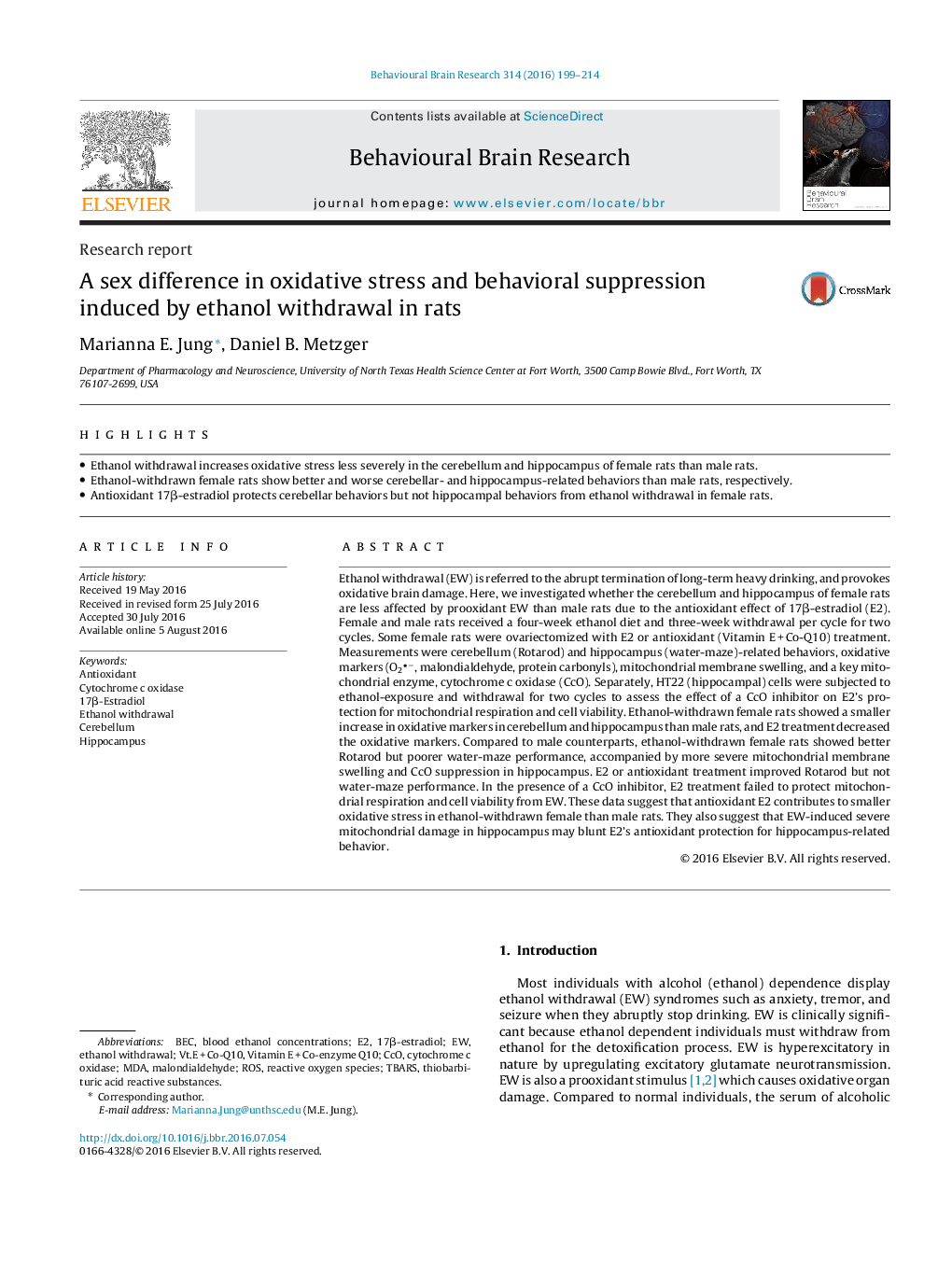| کد مقاله | کد نشریه | سال انتشار | مقاله انگلیسی | نسخه تمام متن |
|---|---|---|---|---|
| 4312118 | 1612919 | 2016 | 16 صفحه PDF | دانلود رایگان |
• Ethanol withdrawal increases oxidative stress less severely in the cerebellum and hippocampus of female rats than male rats.
• Ethanol-withdrawn female rats show better and worse cerebellar- and hippocampus-related behaviors than male rats, respectively.
• Antioxidant 17β-estradiol protects cerebellar behaviors but not hippocampal behaviors from ethanol withdrawal in female rats.
Ethanol withdrawal (EW) is referred to the abrupt termination of long-term heavy drinking, and provokes oxidative brain damage. Here, we investigated whether the cerebellum and hippocampus of female rats are less affected by prooxidant EW than male rats due to the antioxidant effect of 17β-estradiol (E2). Female and male rats received a four-week ethanol diet and three-week withdrawal per cycle for two cycles. Some female rats were ovariectomized with E2 or antioxidant (Vitamin E + Co-Q10) treatment. Measurements were cerebellum (Rotarod) and hippocampus (water-maze)-related behaviors, oxidative markers (O2−, malondialdehyde, protein carbonyls), mitochondrial membrane swelling, and a key mitochondrial enzyme, cytochrome c oxidase (CcO). Separately, HT22 (hippocampal) cells were subjected to ethanol-exposure and withdrawal for two cycles to assess the effect of a CcO inhibitor on E2’s protection for mitochondrial respiration and cell viability. Ethanol-withdrawn female rats showed a smaller increase in oxidative markers in cerebellum and hippocampus than male rats, and E2 treatment decreased the oxidative markers. Compared to male counterparts, ethanol-withdrawn female rats showed better Rotarod but poorer water-maze performance, accompanied by more severe mitochondrial membrane swelling and CcO suppression in hippocampus. E2 or antioxidant treatment improved Rotarod but not water-maze performance. In the presence of a CcO inhibitor, E2 treatment failed to protect mitochondrial respiration and cell viability from EW. These data suggest that antioxidant E2 contributes to smaller oxidative stress in ethanol-withdrawn female than male rats. They also suggest that EW-induced severe mitochondrial damage in hippocampus may blunt E2’s antioxidant protection for hippocampus-related behavior.
Journal: Behavioural Brain Research - Volume 314, 1 November 2016, Pages 199–214
